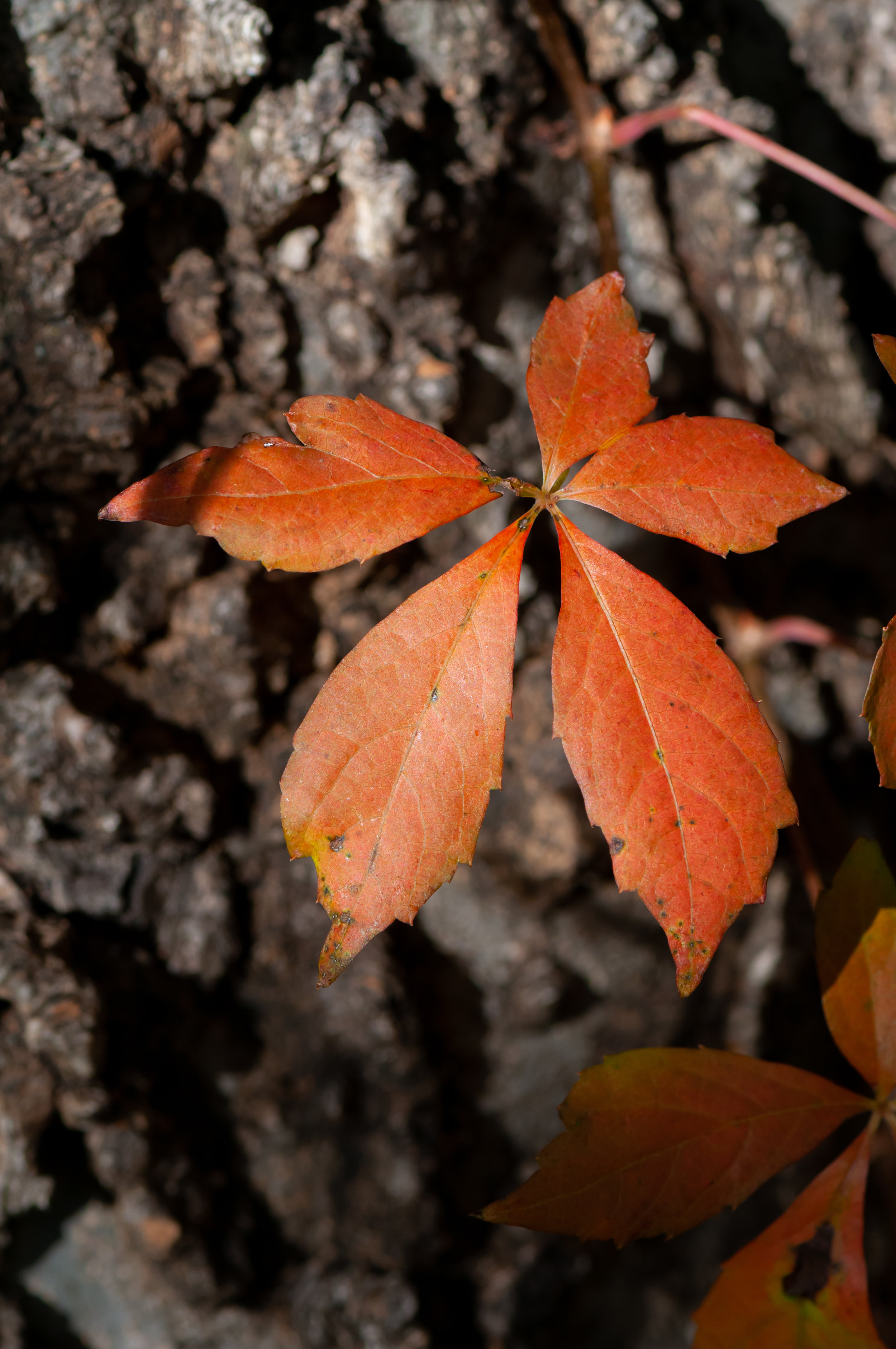Our campsite at Rocky Point was amazing.
We just returned from another camping/photography outing. We had a great time and I was able to get some good images. This time we camped at Rocky Point on Lake Fort Gibson. I hoped to capture some good fall foliage landscapes and “macro scapes” as well as some good migrating birds, and anything else that came my way. I was not disappointed.
The leaves were setting up to be some of the best we have had in several years (in Oklahoma). These past few summers and falls have been dry, windy, and warmer than normal. During these past seasons, we did not see large expanses, or good vistas of fall colors. One reason for that appeared to be the trees did not come into color in unison. The wind also stripped most tress of their leaves before they had any color, or reached full color. The fall colors in those seasons were far and few between.
The bright red Virginia Creeper added color to the woodland.
This year looked very promising – late summer rains not typical for us revitalized trees almost statewide. Strong northerly winds, which are common throughout the state, as cold fronts barrel across the state, seemed to be less harsh. We kept checking for color every week and things were looking good. It appeared the fall colors would peak at the end of October and into November. We started making our plans.
The drive to the lake and the campground looked real good – the leaves were already at around 30 – 40% in color! This particular area is heavily oak woodland with pecan, black walnut, hackberry, elm, ash, cottonwood, and a few maple trees scattered amongst the oak trees. The major colors are orange, yellow, warm greens, and muted browns. Blue skies and lakes can make these colors really, pop! We could not wait for sunrise.
This hornet was warming up on our tent.
Two problems arose with sunrise the next day – it was windy and there were no clouds in the sky. Okay, we will deal with that. Shutter priority would allow me to stop swaying of the trees and their leaves (which would cause blur). Shadows would be harsher with no clouds diffusing the sunlight. Faster shutter speeds would affect depth of field, especially using a polarizing or neutral density filter. A higher ISO would help solve the exposure problems, but I do not go over ISO 200 on landscapes because noise will invariably kill any details (such as leaves) in the image. But, sometimes its better to scout the area for a location that is out of the wind than it is to fight high winds and high noise levels.
That is what we did the first day. We looked for protected areas that offered color, or unique landscape opportunities. I was able to make a few landscape images, but we saw a pod of White Pelicans in a cove and decided to check them out. The pod of pelicans was actively feeding in the middle of the cove, too far for even the 600 mm lens. I watched them as they fished together as a unit. I noticed a pattern of individual birds gliding in to share in the feast so I carefully moved into position to get the light in my favor (as well as I could) but I had to settle on a left to right wind direction rather them having the wind coming from behind me.
Things were beginning to improve with the pod slowly moving closer, and more birds flying in to join the fray. I fired a few shots to check my exposure. I was ready, and the wait began. After a thirty minute wait a flock of three-four hundred Cormorants came sailing into the cove. I could hear their wing beats as they crossed in front of me. There were a few pelicans with them. They started to land further into the cove. After thirty minutes, the pelicans started to leave the Cormorants and slowly glide in to join the feeding pod of pelicans getting ever closer to me. As the birds came out of the cove they passed within range of the 600 mm lens, Birds land into the wind, and these big birds were much easier to track with the stiff head wind they were landing into. Things were looking good and then I heard the distant droll of a boat motor – a boat was moving into the cove and was surely going to spook the birds.
One of the White Pelicans that flew into the cove to join the feeding pod of birds.
Once the boat got within a hundred yards of the pelicans, the birds took off. They flew further into the cove, but were out of range. The boat moved past me and went into the cove as well. Soon those Cormorants came flying out of the cove – all of them along with a few of the pelicans and some gulls. They did not stop, and disappeared from view. The pelicans eventually worked their way out of the cove – out of range. I was also out of time so we moved on.
Our camping area was beautiful. Stately trees adorned with fall colors filled the area. Virginia Creeper and Sumac offered a blaze of red here and there. I decided the afternoon shoot would be right here. Everything came together that afternoon except the wind kept blowing briskly. I got a few more nice images before sunset and called it a day. Tomorrow could be perfect.
Unfortunately, the wind blew all night without letting up until dawn. When I got to a spot I had planned to shoot from I saw that the leaves along the far shore were now naked! Sure there was still a lot of color, but this location was ruined.
Until next time – get out there and make some fall images!




